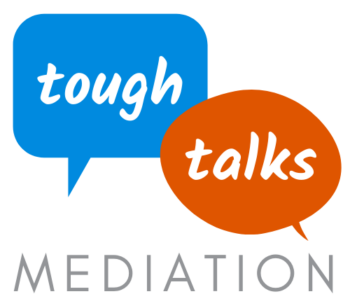How does mediation work? To answer this question, we first need to say a few words about arguments. Arguments are to mediation what diseases are to vaccines: without the former, there is no need for the latter.
Arguments happen every day. Some are more serious than others. Some blow up in an instant, while some fester for years before boiling over.
Some arguments sort themselves out on their own. But when people are arguing about something really important to both of them, it can be difficult (if not impossible) to separate the person from the problem. Arguments become heated as communication breaks down and each party entrenches themselves deeper and deeper into their respective positions.

In his book Conflicts: A Better Way to Resolve Them (1985), Eduard De Bono—one of the world’s leading thinkers about thinking—suggests that argument is over-used and inadequate as a means of resolving conflict because it leads to the parties adopting rigid, entrenched positions, which in turn prevents the parties from engaging in collaborative or creative problem-solving.
So, what’s wrong with arguments?
Nothing at all. Most of the time.
Arguments, of course, can be an effective way of resolving disputes. In fact, it is the basis of both our government and our justice system. Each “side” takes turns stating their case and responding to what the other has said. But the key difference is that, in government, the members of parliament cast votes to determine who “won” the argument. Similarly, in the justice system, there’s an independent person (such as a magistrate or a judge) who ultimately decides who is right and who is wrong. The purpose of the argument is to persuade the outside decision-maker, not the other side.
This highlights the difficulty with an argument in the absence of a circuit-breaker, such as a judge or an established process of voting. It eventually degenerates into a stalemate with neither side willing to give an inch: I am right. No, I am right. And so on.
Of course, taking a case to court is also expensive—the Commonwealth Attorney-General’s Department estimated in A Strategic Framework for Access to Justice in the Federal Civil Justice System (2009) that the average cost of legal proceedings in the Federal Court in 2007/08 was about $100,000 for each party!
There must be a better way!
Well, the good news is there is.
Litigation is just one option on the continuum of conflict management:–

Assuming the dispute has gone beyond unaided negotiation and the parties don’t have a lazy $100k (or more) lying around that they’re willing to spend in the court system, mediation presents as a comparatively quick and much more cost-effective way of resolving tricky disputes.
The “how” of mediation: Slow. It. Down.
In his celebrated book Thinking, Fast and Slow (2011), Nobel Prize-winning psychologist and economist Daniel Kahneman summarises his years of research into how people think. Kahneman’s research led him to conclude that humans have, as the name of the book suggests, two modes of thinking—fast and slow.
Fast thinking, or “system one” as Kahneman describes it, is instinctive and emotional. It governs threat perception and the “fight-flight-freeze” response. The mantra of system one might be “better safe than sorry”.
Slow thinking, or “system two”, is more methodical and logical; though still prone to irrational behaviour based on unconscious biases that lead to phenomena such as optimistic overconfidence and loss aversion.
Strong emotional responses, such as resentment, fear, or anger, are a product of system one thinking and very often to be found at the root of any given conflict. To help parties resolve conflict, mediators look to tap into the analytical and more rational processes of system two thinking.
Kahneman’s research suggests that system two is still capable of irrational behaviour, but an attentive mediator will help the parties get past these issues in private sessions by rigorously reality testing the parties’ beliefs and assumptions to help them overcome their unconscious biases.
Bringing it all together
In summary, mediation works by allowing the parties the time and space to decompress in a safe and structured environment. The parties are encouraged to share their respective sides of the story and explain what is important for them.
The mediator uses techniques, such as re-framing and mirroring, to limit the effects of emotion on negotiations. Of course, it would be quite impossible to remove emotion from the process entirely, but the mediator will work to frame the parties’ emotions in a constructive and positive way so that the parties can look past their disagreement and get into a mindset of joint problem-solving so that they can agree on a way forward.

